New Zealand earthquake: Kaikoura evacuations under way
- Published
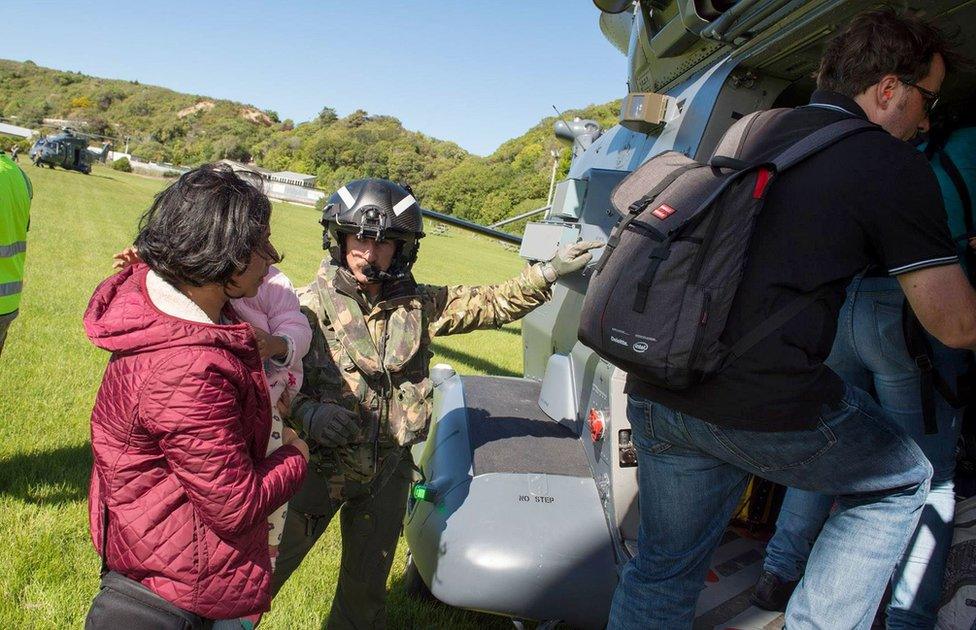
The New Zealand Defence Force released pictures of its ongoing evacuation efforts in Kaikoura
New Zealand rescue workers are evacuating scores of tourists and residents from the town hardest hit by a series of powerful earthquakes.
Four air force helicopters have been airlifting people out of Kaikoura on the South Island after battling strong winds and heavy rain earlier.
The town, northeast of Christchurch, has been cut off by landslides triggered by the quakes.
Hundreds of aftershocks continue to rock the area.
Two people were killed in the magnitude-7.5 earthquake that struck the South Island early on Monday.
The capital Wellington, at the southern end of the North Island, was also affected. It was then hit by poor weather on Tuesday, with heavy rain and flooding.
In one bright spot for the quake recovery, three cows that were filmed stranded on a tiny island after their field collapsed around them have been rescued. The farmer that owns them dug a track and encouraged them to come down.
Farmer Derrick Millton was quoted as saying: "They're quiet but they've had a terrible ordeal... You're a clever cow to skip and dance while the land beneath you is disappearing down the hill."
Three cows were left stranded after the quake
Air Commodore Darryn Webb, acting commander of New Zealand joint forces, told TVNZ that approximately 200 people were being airlifted out of Kaikoura.
There are an estimated 1,200 tourists at the popular whale-watching spot, along with a population of about 2,000.
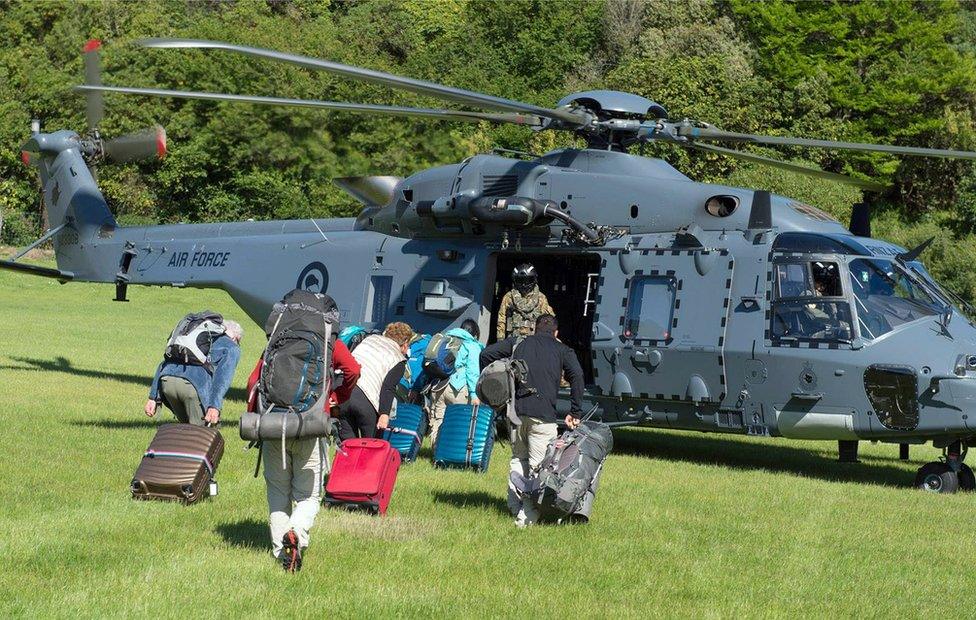
About 200 people are being airlifted out of the town

At least 1,200 tourists are thought to be at Kaikoura
Two ships and other aircraft are assisting with the evacuations, said the New Zealand Defence Force.
Prime Minister John Key said the top priority was to provide desperately needed supplies to Kaikoura.

Picking up the pieces - Hywel Griffith, BBC News, Waiau
Broken roads and buckled buildings mark the edges of Waiau, one of the towns nearest the centre of the earthquake.
But what you notice there most is the army of workers already on the ground, trying to get the town reconnected. New poles are being raised to hold up the electricity lines, water supplies are slowly being restored.
We watched as builders pulled down a broken chimney stack from the roof of one of the homes. Its owner, Andrew, showed me the damage inside - the walls are cracked, furniture had been thrown around.
But he feels lucky. His parents, who are now staying with him, say their home has been "totalled".
While there is relief that everyone here survived safe and well, there is still a sense of anxiety, as the aftershocks continue to roll in.

Police have warned that water and electricity supplies are running low, while hundreds of people remain in evacuation shelters and community centres.
At least 1,000 people are being housed in the local marae, or Maori meeting place, in Kaikoura. They had crayfish - the town's speciality - for breakfast on Tuesday, after local fisheries' tanks failed with the electricity shortage, reported Reuters.
"It's better to use the food than throw it in the rubbish," said local Maori community leader Mark Solomon.
Local divers and fishermen are also working to relocate, external tens of thousands of paua - a type of mollusc - after the seabed rose out of the water by around 2m (6.6 ft), leaving them stranded, Newshub reports.
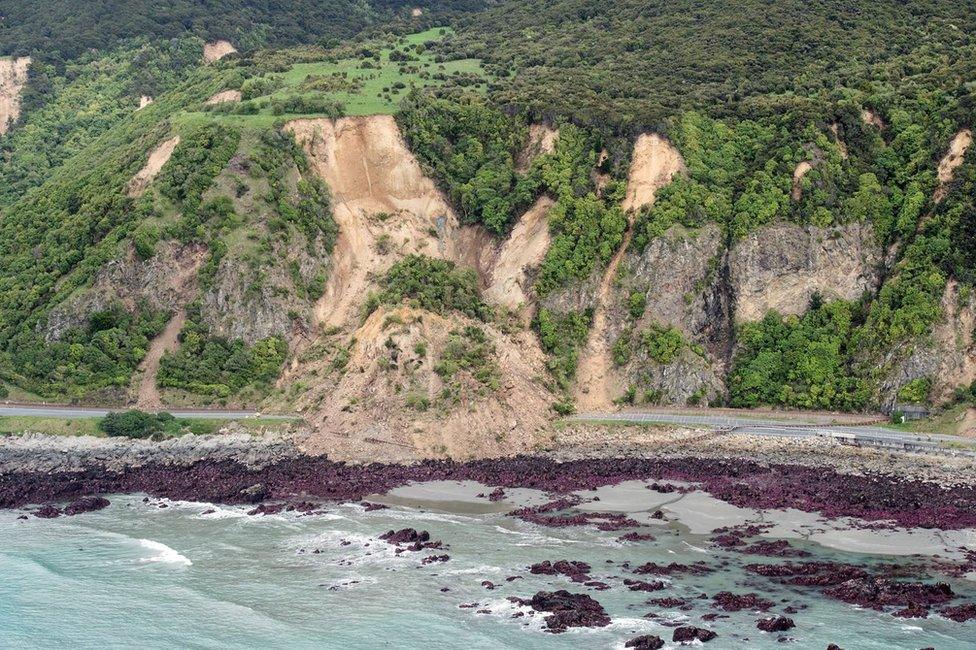
The main road and rail line into Kaikoura have been hit with landslides
Transport Minister Simon Bridges told reporters on Tuesday that access to Kaikoura would take "several months" to be re-established.
Officials assessing the aftermath say billions of dollars of damage was caused, with major road and rail links severed.
GeoNet,, external a government-funded project monitoring earthquakes, said that aftershocks would continue over the next few months.
The earthquake caused damage in Kaikoura and Culverden
Meanwhile, Wellington on the North Island is facing the double whammy of regular aftershocks and intense weather.
Heavy rain and winds have shut down some highways and rail lines, closed schools and caused electricity outages and flooding.
A nine-storey building in the city's centre is in danger of collapsing, the New Zealand Fire Service says, with streets nearby closed.
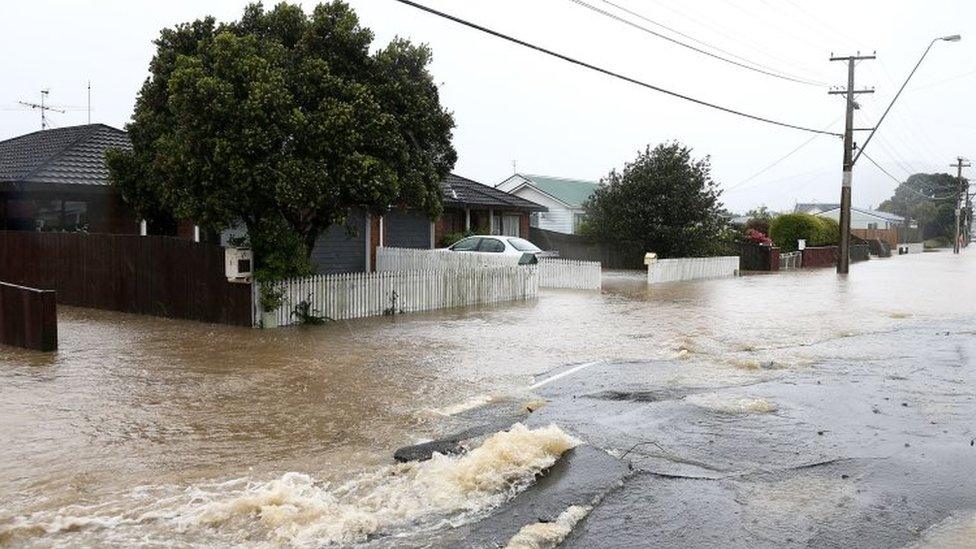
Wellington has been hit by flooding and aftershocks

Cracks emerged on roads in the capital after the quake
The first earthquake hit shortly after midnight on Sunday, prompting thousands to flee their homes and head for higher ground as authorities issued a tsunami warning.
Waves of around 2m hit the coast shortly afterwards, and the tsunami alert was later lifted.
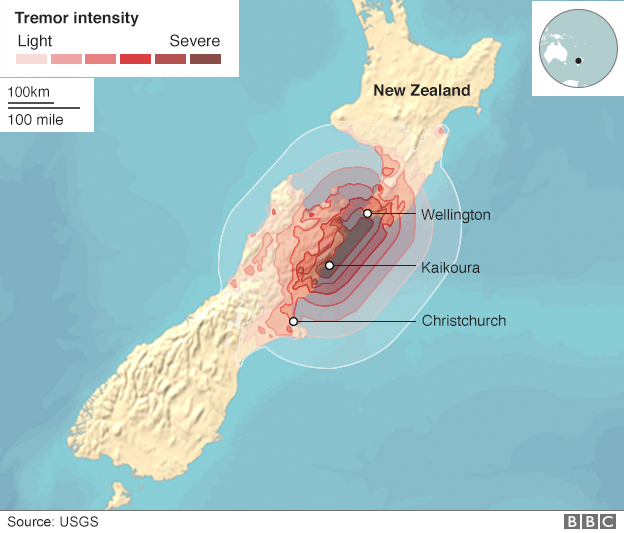
New Zealand lies on the Ring of Fire, the fault line that circles virtually the entire Pacific Rim bringing frequent quakes and volcanic eruptions.
Christchurch is still recovering from a 2011 earthquake that killed 185 people and destroyed the city centre.
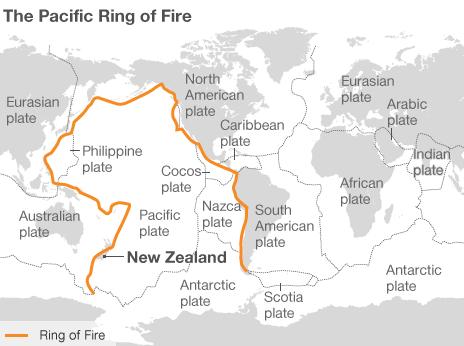
- Attribution
- Published14 November 2016
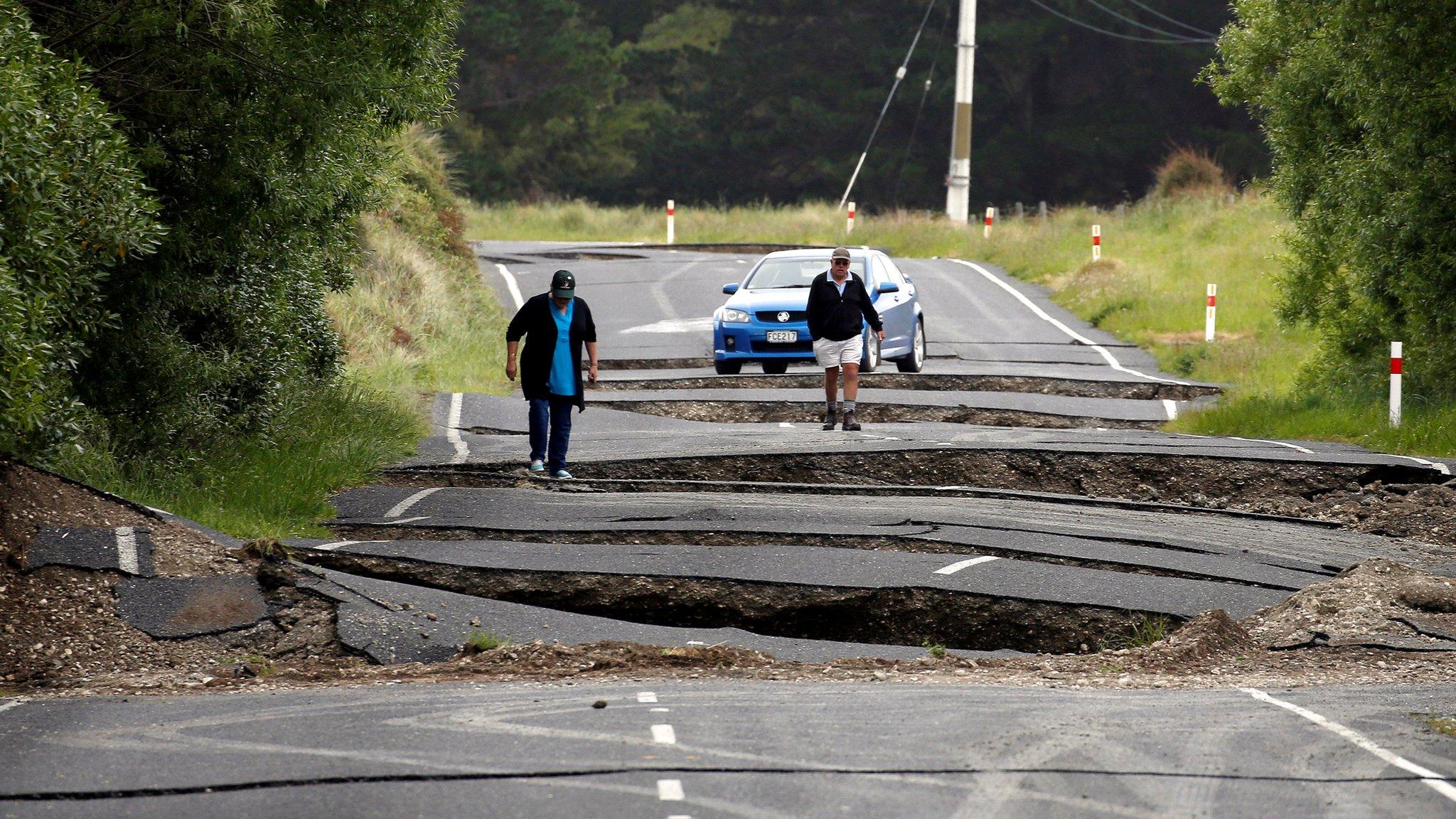
- Published14 November 2016

- Published14 November 2016

- Published13 November 2016
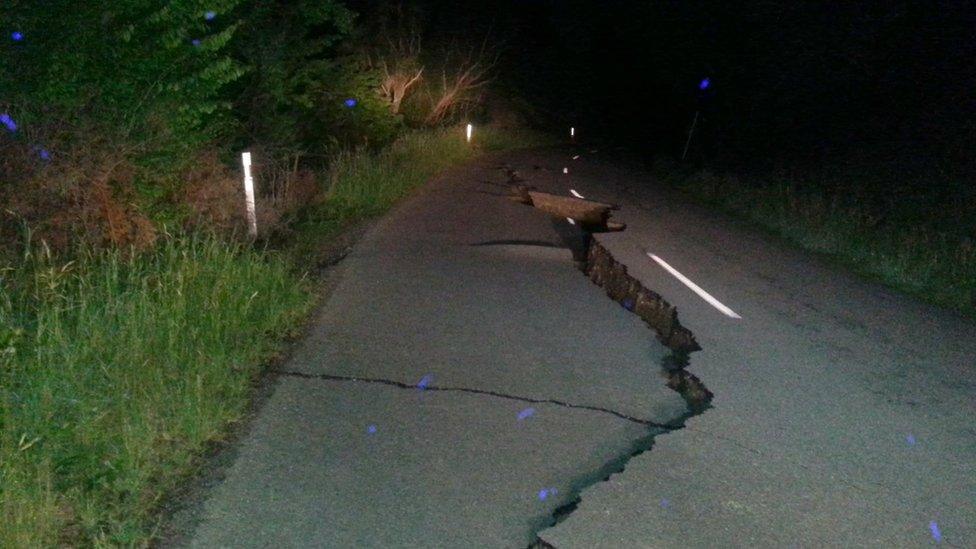
- Published22 June 2022
